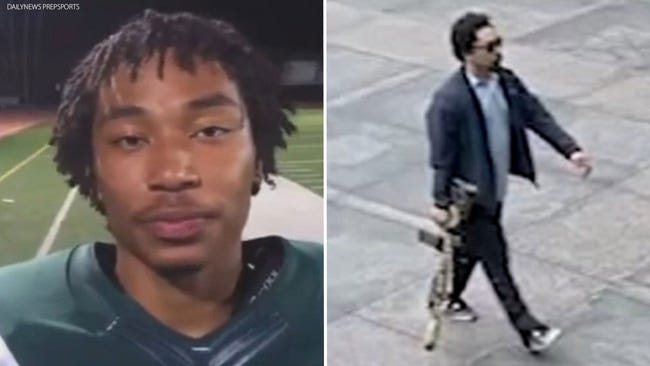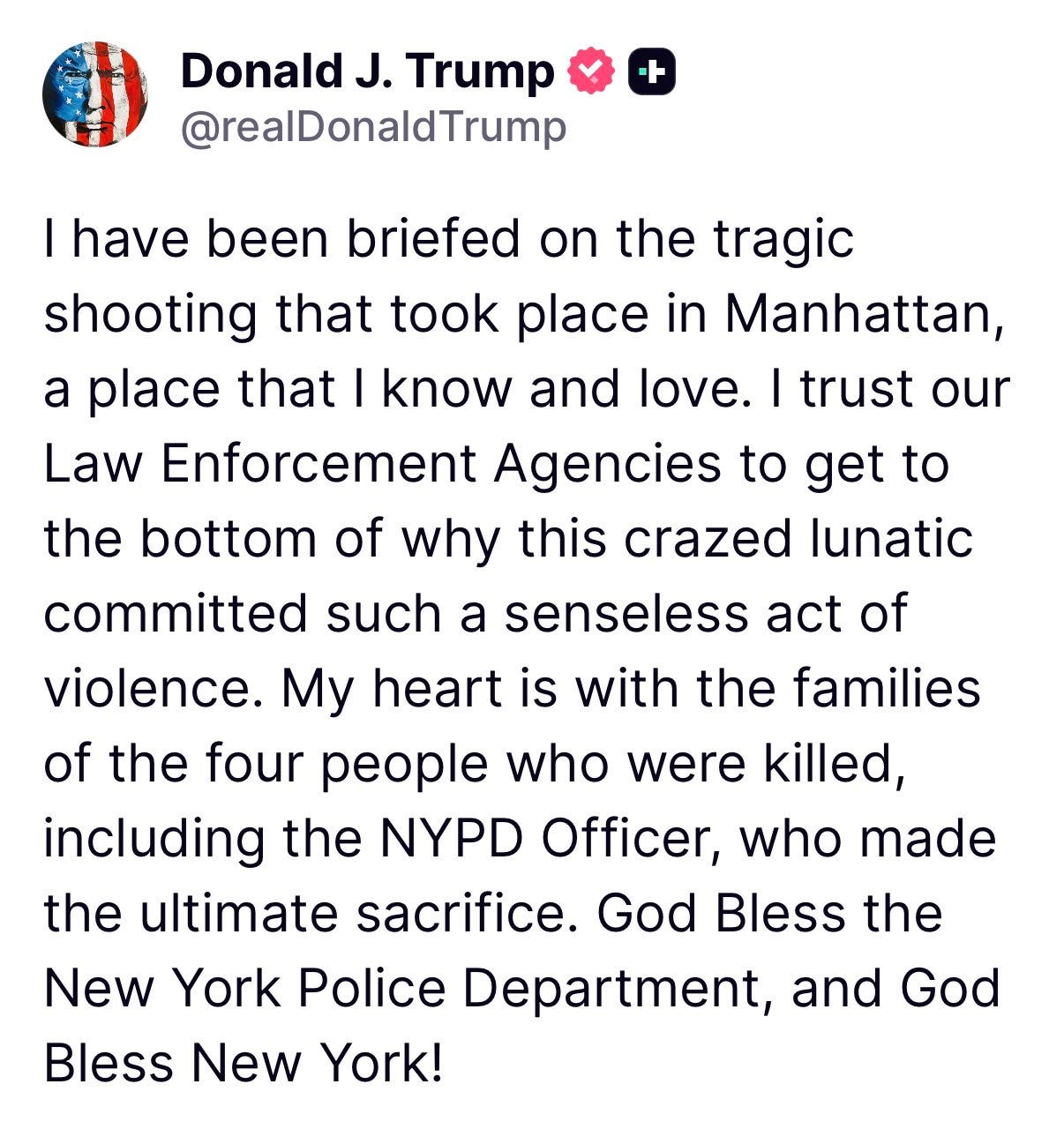“NFL” Shooting Wasn’t Random
Another manifesto gets censored in a case that needs transparency
A shooter travels to Manhattan planning to target corporate executives he blames for his health issues. He leaves behind a note that law enforcement won’t release and the news media is happy to quote from selectively but won't publish.
Sound familiar?
The parallels between Shane Tamura, the 27-year-old Nevada man who killed four people in a Midtown Manhattan office one week ago today, and alleged assassin Luigi Mangione are uncanny. Unlike Mangione, however, Tamura’s victims had nothing to do with his reported health issues. As a result, his rampage was framed as a random act of “senseless violence,” as President Trump declared. But former friends of Tamura’s that I talked to say there’s more to the story: that his suicide note’s reported claim that “football gave me CTE” is plausible, given his many years as a high school football star.
“Chronic Traumatic Encephalopathy,” or CTE, is a degenerative brain disease caused by repeated blows to the head. Often seen in contact sports like football, one study by Boston University found CTE in 99 percent of deceased former NFL players it examined(!), as well as 91 percent of college players and 21 percent of high school players. Early symptoms like headaches, mood swings, memory problems and confusion typically begin within 10 years of head trauma.
Authorities have said that they believe that Tamura intended to target NFL headquarters but took the wrong bank of elevators in the building.
Two former high school classmates describe Tamura to me as “popular,” recalling someone who was friendly and outgoing — far from the stereotypical loner gunman.
“It was definitely a shocker seeing him on the news; [I] would never think of him of all people to do something like that,” said one former classmate. “When I knew him, he was pretty normal. Wasn’t ever really weird.”
The former classmate, himself now a scientist, says he thinks the shooting underscores the importance of taking seriously CTE as a public health issue.
“I do think the NFL and health scientists should take CTE injuries more seriously after this,” he added. “Sadly it’s never taken seriously enough.”
The classmates, while clearly horrified by Tamura’s actions, are also able to appreciate the likelihood that there’s a public health dimension to the shooting. Wouldn’t it be nice if our elected leaders were capable of that kind of nuance? That’s certainly how I feel about it, and why I hope that the media publishes the notes he left behind: not to glorify anything but to understand what happened and how it might be prevented from happening again.
What little we know about the writing Tamura left behind reportedly includes three separate references to CTE:
“You can’t go against the NFL, they’ll squash you.”
“Study my brain please I’m sorry.”
“Terry Long football gave me CTE and it caused my to drink a gallon of antifreeze.”
Terry Long, who played as an offensive lineman for the Pittsburgh Steelers in the 80s and 90s, committed suicide in 2005 by drinking antifreeze. An autopsy revealed that Long had been suffering from CTE.
Yesterday, it began to surface that Tamura had reportedly suffered debilitating headaches for which he met regularly with a neurologist and other doctors; he was also twice held involuntarily for mental health reasons. Tamura was also reported to have started playing tackle football at age 6.
ESPN reported a source close to the family as saying that “Tamura would talk about younger players needing better equipment and safety” (something even the most high-profile fans of the sport like the late John Madden called for); and that he said “he believed he had CTE but also knew that it could be diagnosed only posthumously.”
The deaths of four innocent people is, of course, awful. But you have to be aggressively incurious to shrug this off as “senseless violence,” the implication being that there’s nothing that could have been done to prevent it.
The incuriosity here about what could inspire such an act by someone whose former classmates uniformly describe as a nice guy — not just the ones I talked to but all of those interviewed that I could find — reminds me of the national security state’s clueless approach to threats.
The most glaring example of this is the FBI’s new threat designation, “Nihilistic Violent Extremists” (the existence of which I first reported here). In example after example, the government so labels actions which, like Tamura’s, are of course horrifying; but even a cursory look reveals that they are hardly random or without meaning.
It’s not just the FBI. National Guard sources have told me that they were getting briefings warning about the “nihilistic violent extremist” threat amid the anti-ICE protests in Los Angeles, something that’s about as politically-laden with meaning as one can imagine.
The idea that tragedies like mass shootings happen for no reason at all because life is just random like that, what can ya do — now that’s nihilism.
— Edited by William M. Arkin



I hope someone will float the full suicide note your way, Ken. Selective reporting serves no one except those in power.
If CTE can be diagnosed posthumously, has his brain now been autopsied?